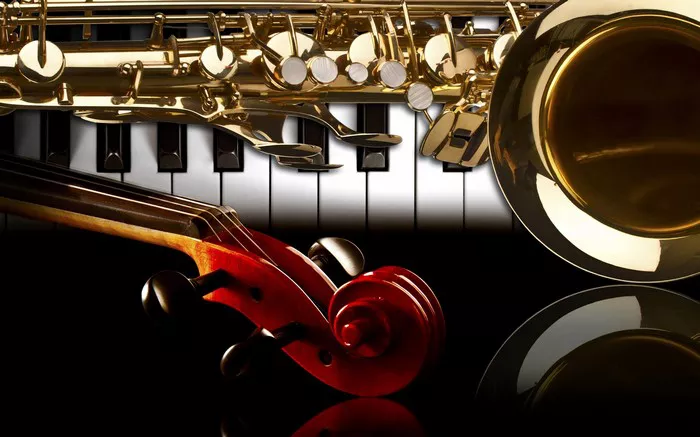Classical music is a timeless treasure trove of emotive and evocative pieces that have captivated audiences for centuries. Within this magnificent realm, certain compositions stand out as breathtaking masterpieces, touching the depths of the human soul and transcending the boundaries of time. In this article, we’ll embark on a mesmerizing journey through the top 10 most beautiful pieces in classical music, each a masterpiece that has left an indelible mark on the world of art and culture.
I. Rachmaninoff – Piano Concerto No. 2 in C Minor, Op. 18
Rachmaninoff’s Piano Concerto No. 2 is a quintessential representation of the Romantic era, known for its lush melodies, emotional depth, and virtuosic piano passages. The concerto’s second movement, Adagio Sostenuto, is particularly enchanting, featuring a soaring and poignant melody that tugs at the heartstrings. This piece showcases the composer’s brilliance in capturing the profound and stirring essence of human emotion.
II. Brahms – Violin Concerto in D Major, Op. 77
Brahms’ Violin Concerto in D Major is a pinnacle of the violin repertoire, celebrated for its richness, lyricism, and dramatic intensity. The opening movement combines grandeur with soul-stirring melodies, while the second movement’s poignant Adagio soothes the spirit. The virtuosic finale brings the concerto to a triumphant close, making it a beloved masterpiece that showcases the violin’s expressive capabilities.
III. Beethoven – Sonata No. 8 in C Minor, Op. 13 (“Pathétique”)
Beethoven’s “Pathétique” Sonata is a testament to the composer’s revolutionary spirit and emotional depth. The opening movement is charged with passion and drama, while the Adagio Cantabile exudes serenity and beauty. The final movement’s fiery energy and relentless drive leave a lasting impression, making this sonata a timeless favorite that resonates with listeners.
IV. Verdi – Messa da Requiem
Verdi’s “Messa da Requiem” is a monumental choral work that encompasses the full spectrum of human emotions, from sorrow to redemption. The Dies Irae sequence is particularly iconic, with its thunderous and spine-chilling melodies. The “Messa da Requiem” is a testament to Verdi’s operatic genius, as he infuses the requiem mass with operatic grandeur, creating a profoundly moving and unforgettable masterpiece.
V. Tchaikovsky – Symphony No. 5 in E Minor, Op. 64
Tchaikovsky’s Symphony No. 5 is a quintessential representation of the composer’s emotional intensity and gift for orchestration. The soaring melodies of the second movement and the triumphant finale make this symphony a journey of both turbulence and triumph. Tchaikovsky’s ability to convey powerful emotions through music is evident in this symphony, leaving a profound impact on all who hear it.
VI. Brahms – Symphony No. 2 in D Major, Op. 73
Brahms’ Symphony No. 2 is a luminous and joyful work that radiates warmth and optimism. The second movement’s pastoral tranquility, the Scherzo’s lively charm, and the radiant finale make this symphony a masterpiece of classical beauty. Brahms’ melodic genius and symphonic craftsmanship are on full display, creating a symphony that is both exquisite and uplifting.
VII. Wagner – “Tristan and Isolde”
Wagner’s opera “Tristan and Isolde” is a masterpiece of love and longing, known for its transcendent and sensuous music. The Prelude to the opera, with its famous Tristan chord, is a profound expression of desire and yearning. The opera’s intense emotional depth and Wagner’s innovative use of harmony make “Tristan and Isolde” a landmark work in the world of opera, leaving a lasting impact on music history.
VIII. Chopin – Ballade No. 1 in G Minor, Op. 23
Chopin’s Ballade No. 1 is a poetic and expressive piano masterpiece, showcasing the composer’s gift for crafting intricate and emotional narratives through music. The ballade’s dramatic contrasts and lyrical passages create a captivating journey of musical storytelling. Chopin’s ability to evoke a wide range of emotions in a single piece is evident in this enchanting work.
IX. Wagner – “Tristan and Isolde”
Wagner’s opera “Tristan and Isolde” is a masterpiece of love and longing, known for its transcendent and sensuous music. The Prelude to the opera, with its famous Tristan chord, is a profound expression of desire and yearning. The opera’s intense emotional depth and Wagner’s innovative use of harmony make “Tristan and Isolde” a landmark work in the world of opera, leaving a lasting impact on music history.
X. Chopin – Ballade No. 1 in G Minor, Op. 23
Chopin’s Ballade No. 1 is a poetic and expressive piano masterpiece, showcasing the composer’s gift for crafting intricate and emotional narratives through music. The ballade’s dramatic contrasts and lyrical passages create a captivating journey of musical storytelling. Chopin’s ability to evoke a wide range of emotions in a single piece is evident in this enchanting work.

